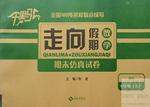题目内容
In 1999, 11-year-old Kevin Stephan was a bat boy for his younger brother's Little League team in Lancaster, New York. It was an early evening in late July. The sun shone at an angle across the field. The game unfolding in baseball time. Kevin was standing on the grass away from the plate, where another youngster was warming up. Swinging his bat back and forth, giving it all the power an elementary school kid could gather. The boy brought the bat back hard and hit Kevin square in the chest.
His heart stopped.
When Kevin fell to the ground, the mother of one of the players rushed out of the stands to his aid. Penny Brown hadn't planned to be there that day, but at the last minute, her shift at the hospital had been changed, and she was given the night off. Penny bent over the unconscious boy, his face already starting to turn blue, and administered CPR, breathing into his mouth and administering chest press.
And he came back.
It was a good thing, for a good kid. Kevin wasn't just a volunteer for his brother's baseball team --- he was a Boy Scout, one who went on to achieve Scouting's highest rank, Eagle. He became a volunteer junior firefighter, learning some of the emergency first-aid techniques that had saved his life. He studied hard in school and was saving money for college by working as a dishwasher in a local restaurant. He liked the people, but the work could be hard and pretty routine. Until the afternoon of January 27, 2006.
Kevin, now 17, was working in the kitchen when he heard people screaming, customers in confusion, employees rushing toward a table. He hustled into the main room and saw a woman there, her face turning blue, her hands at her throat. She was choking. Quickly Kevin stepped behind her, wrapped his arms around her and clasped his hands. Then, using skills he'd first learned in Scouts, he pulled suddenly inward and up, once, twice, administering the Heimlich maneuver. The food that was trapped in the woman's throat was freed. The color began to return to her face.
"The food was stuck. I couldn't breathe," she said. She thought she was dying. "I was very frightened.”
Guess who the woman was ? Penny Brown
56. According to the passage, we can learn about Kevin that .
A. In 1999. Kevin was hit by a bat unexpectedly when he was doing baseball warming up.
B His heart disease overtook him.
C. He was hit square in the chest watching his younger brother’s team.
D. He swung his bat too fiercely and hurt himself.
57. Why was Penny Brown right at the accident spot when Kevin was hit?
A. Because she was interested in baseball.
B. Because she had had her turn to work changed.
C. Because her son was playing that evening.
D. Because she was not supposed to be at work at the hospital.
58. What does the underlined word “it ” in Paragragh5 refer to?
A. That Kevin was a bat boy.
B. That Kevin got injured.
C. That Kevin was a Boy Scout.
D. That Kevin was successfully saved.
59. Which of the following is not true according to the text?
A. The Heimlich maneuver is an effective way to help those who choke.
B.CPR can be used to treat one who has no heartbeat.
C. Kevin learned some of the emergency first-aid techniques in Scout.
D. Penny Brown was not Kevin’s mother.
60. Which one is the best title of the passage?.
A. miracles take place every day.
B. acts of kindness will deserve another good deed.
C. we should learn first aid in case of emergency.
D. we should be kind to those who ever helped us.
56.C。57.B。58.D。59.C.60.B
解析:
56.C。细节题。 由第一段的“The boy brought the bat back hard and hit Kevin square in the chest. ”可知
57.B。细节题。 由第三段的“Penny Brown hadn't planned to be there that day, but at the last minute, her shift at the hospital had been changed, and she was given the night off.”可知Penny Brown 原本是要上班的, 但由于临时换班才在事故现场。
58.D。词义推测题。 下文揭示了为什么对于一个好孩子来说是件好事: Kevin 参加了很多志愿者活动, 学习急救常识等, 而Kevin 做这些是与他自己那次成功获救的经历分不开的。 故D项符合题意。
59.C.细节题。 由第五段的“Kevin wasn't just a volunteer for his brother's baseball team -- he was a Boy Scout, one who went on to achieve Scouting's highest rank, Eagle. He became a volunteer junior firefighter, learning some of the emergency first-aid techniques that had saved his life.”可知A是正确的。 Kevin停止呼吸时正是靠CPR 方法救活的, 故B是正确的; 第五段提到的Kevin 成为了一名青少年志愿者, 学习急救常识, 与C项的成为一名消防队员的梦想是有区别的, 故C项不对; Penny食物哽咽的时候Kevin 使用了他的the Heimlich maneuver方法帮助救她, 可知D是正确的。
60.B 主旨要义题。 文章讲述了Penny Brown曾经救助过Kevin, 而若干年之后她又被Kevin救了,可想作者想告诉我们善有善报。

 千里马走向假期期末仿真试卷寒假系列答案
千里马走向假期期末仿真试卷寒假系列答案a. have less and low-speed traffic
b. be environmentally friendly
c. keep the natural state of the town
d. stop the traditional ways of doing things
e. have a population within 50, 000
B. a, b and c.
C. b, c and e.
D. c, d and e.
B. control the population of big cities
C. give people more time to travel
D. improve quality of life
B. "Slow city" is a movement to eat slowly in Italian cities.
C. The slow city movement has a long history of over 20 years.
D. Only some cities can be considered slow ones
B. people begin to think about the negative effects of city development
C. people are tired of living in urban areas due to great pressure
D. people need to try a new adventurous style of life
B. Slow cities in the world
C. Slow cities and the slow city movement
D. How can we make our city a slow city?